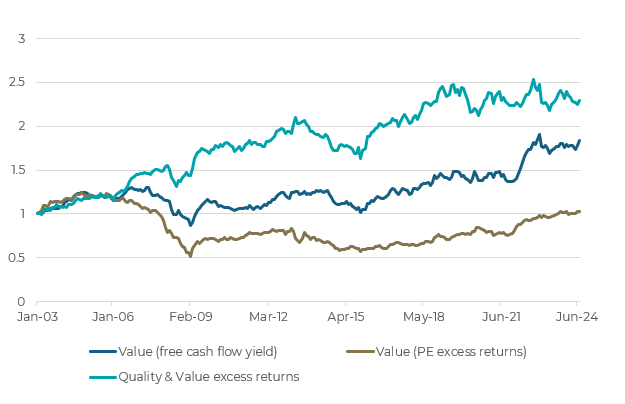While small and microcap companies are more vulnerable to volatility and economic conditions, this also creates opportunities.
Since August 2021, when central banks started a rate rising cycle in response to higher inflation, the share prices of small and micro caps have been disproportionately punished compared to their larger peers.
The key reason is that they are more intrinsically linked to the economic cycle, due to typically having lower pricing power and more difficulty accessing debt.
However, this environment creates significant opportunities for active investors to buy quality businesses that have been sold off in fear rather than fundamentals. Although small caps are generally riskier than their larger cap counterparts, there are many exceptional small cap companies that are expanding rapidly, generating strong free cash flow, and are self-funding growth.
To put it another way, the large caps of tomorrow are the small caps of today.
Where is the value?
Our current focus is more on microcaps (ASX 300 and beyond). This is where we see the biggest mispricing opportunities—quality companies that have been punished due to perceived risks around not just pricing power and access to debt, but also because they are often linked to a single product or service and are therefore less diversified.
However, they can still be well-run businesses offering structural growth opportunities.
One example is Smart Pay (ASX SMP), a payments provider that has 18,000 terminals across Australia and which charges fees to the customer rather than the merchant. They also have plenty of potential for expansion of this business model, by converting the 30,000 terminals they have in New Zealand to the higher revenue Australian model. They have double-digit bottom- and top-line growth, are highly cashflow positive, self-funding and have no debt.
The opportunity for Smart Pay is immense. The CEO is highly capable and is expected to convert the majority of terminals. Although the share price is down 30 per cent this year due to the market perceiving it to be highly correlated to the economy, the company’s structural growth potential is significant. Despite a weak consumer environment, Smart Pay has been able to capture market share from the banks.
We are currently underweight consumer discretionary because many constituent companies are still benefiting from pandemic-related effects and are trading at multiples above historic averages. Our exposure to the consumer sector is through financials, such as Smart Pay and Zip, which we believe have medium- to long-term structural growth potential.
We are also underweight resources, since many smaller companies in that sector are not yet producing and have negative free cash flow. However, copper presents value due to its role in electrification and decarbonisation, supporting higher long-term prices. We are underweight resources overall but overweight copper. Capstone Copper (ASX: CSC) is a notable pick, being a large producer with operations in the US and Chile.
Understanding the risks
Small caps are often perceived as overly risky due to factors such as access to debt, questionable pricing power, and less diversification. Reducing risk involves finding a skilled manager who can dig deeper and apply a ‘quality overlay’.
Our investment process includes assessing the quality of company management, the business model, and its ability to generate free cash flow. It is crucial to combine these factors and ensure that the valuation is reasonable. Avoiding overpayment for these qualities, while maintaining a portfolio with these attributes, will generally lead to superior returns and reduced risk.
Quantitative analysis confirms that a value strategy focused on free cash flow generation has significantly outperformed the Small Ordinaries benchmark over the past 20 years. Additionally, returns could be further enhanced by incorporating a quality factor overlay. This combination of value and quality has delivered superior returns compared to focusing on free cash flow alone (see figure 1).
Figure 1: Small Ords Style Returns

Source: UBS/Quantitative Investments 2024
Current market volatility presents opportunities for active managers to assess whether a share price hit is justified. Doing the groundwork to understand a business, its fundamentals, and the share price reaction to changing sentiment is essential. Given the volatility in share price reactions, unlocking value and returns in the market is best achieved through active management, particularly within small caps.






